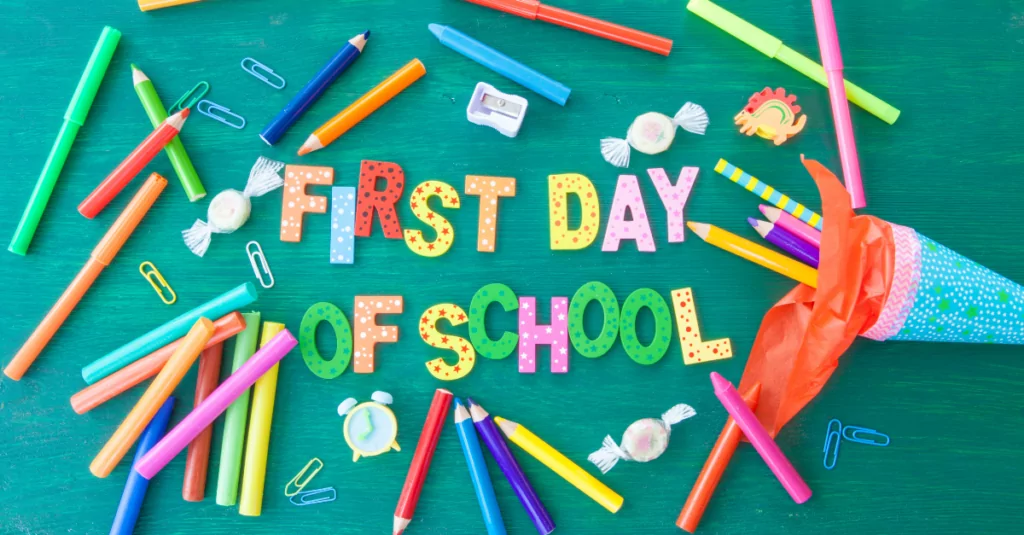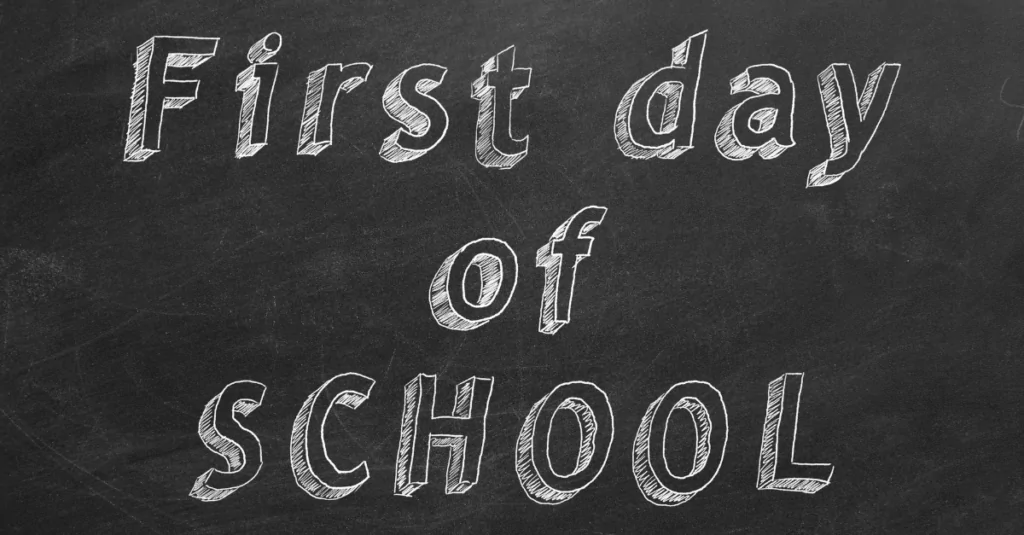In my experience, the first day is more than just about syllabus distribution or rule setting; it’s about setting the tone for the rest of the year, forming those vital initial connections, and igniting the spark of curiosity that drives learning. With each new set of students, I’ve tweaked, adjusted, and experimented with my first day routine, always aiming for a blend of fun, warmth, and an atmosphere of eager anticipation for the year ahead.

In this post, I’m eager to share with you some strategies and activities that I’ve found effective over the years, and that have turned the first day of school into a launching pad for a successful school year.
Whether you’re a new teacher preparing for your first first-day or a seasoned educator looking for new ideas, I hope these suggestions help you make your students’ first day of school memorable, engaging, and exciting!
Check out our back to school resources section for more ideas and materials!
What to Do on The First Day of School
1. Prepare Yourself
Being well-rested and arriving early on the first day of school allows you to double-check that your classroom is in order and that all your necessary materials are available and easy to access. It also gives you time to review your plans for the day and to mentally prepare yourself to meet your new students. For instance, you might use this time to practice the pronunciation of your students’ names or to plan out some personal anecdotes you can share as part of an icebreaker activity.
2. Welcome Your Students
A warm welcome can set a positive tone for the entire school year. Stand at the door as students arrive and greet each one with a smile, making sure to use their names as soon as you learn them.
Consider having a welcome sign or a colorful bulletin board near the entrance of your classroom. For example, you might put up a sign that says, “Welcome to 5th grade! We’re going to have an amazing year of learning together!” or a bulletin board with a welcome message and some motivational quotes or fun facts related to what you’ll be studying this year.
3. Icebreaker Activities
Icebreaker activities can help students get to know each other and start to feel more comfortable in their new classroom. For instance, in “Two Truths and a Lie,” each student shares three statements about themselves—two true and one false—and the rest of the class tries to guess which statement is the lie.
In “Human Bingo,” each student receives a bingo card with prompts like “Has been to another country” or “Likes to draw” in the squares. Students go around the room asking each other questions to find someone who matches each prompt, and the first student to fill in a row or column on their card wins.
4. Classroom Tour
A classroom tour helps students familiarize themselves with their new environment. Walk around the room with your students and point out key areas and resources, such as the book corner, the art supplies, the cubbies or lockers, and the bathrooms. You might even make this into a fun scavenger hunt activity by giving students a checklist of items or areas to find.
5. Discuss Classroom Rules
Instead of simply providing a list of rules, involve your students in the process of setting classroom expectations. Start a discussion about why rules are important and what kinds of behaviors can help create a positive, respectful learning environment. Then, facilitate a brainstorming session where students can suggest their own ideas for rules.
This approach not only gives students a sense of ownership and responsibility, but also ensures that they understand and agree with the expectations because they’ve had a role in creating them.

6. Introduction of Yourself
Personalizing the teacher-student relationship can be a great way to kick off the first day. Share some personal information such as your interests, your favorite books, your pets, or your favorite places to visit. You can also share why you love teaching and any special experiences that led you to become a teacher.
For instance, you might say, “When I was in 5th grade, my teacher Mrs. Smith inspired me with her passion for science, and that’s why I decided to become a teacher. I love exploring the mysteries of the universe with my students!”
7. Schedule Overview
Providing a clear overview of a typical day or week helps students know what to expect and eases any first-day anxieties. You could walk them through the various parts of the day, explaining when you’ll be doing activities like reading, math, science, recess, lunch, and so on. You can also discuss any special weekly activities like library time, computer lab, or physical education.
8. Engage in a Learning Activity
Jump right into learning with an engaging, hands-on activity. This could be a group project where students have to solve a problem together, a simple science experiment that gets them excited about the scientific process, or a creative activity related to one of the subjects you’ll be teaching. For example, if you’re going to be teaching history, you could start with an activity where students use clues to guess the historical period they’ll be studying first.
9. Set Goals for the Year
Goal setting is a powerful tool for motivation and self-improvement. Have your students think about what they want to achieve during the school year, both academically and personally. They could write down their goals on a piece of paper and put it in a special ‘goal box’ or even create a ‘goal poster’ that they can decorate and display in the classroom.
10. End on a Positive Note
Wrapping up the first day on a positive note can leave students feeling excited and optimistic about the coming year. Reassure your students that it’s going to be a fantastic year full of learning and growth. You could also hold a brief sharing session where students can talk about what they enjoyed most about their first day. This can give you valuable insight into your students’ interests and can help to foster a sense of community right from the start.




